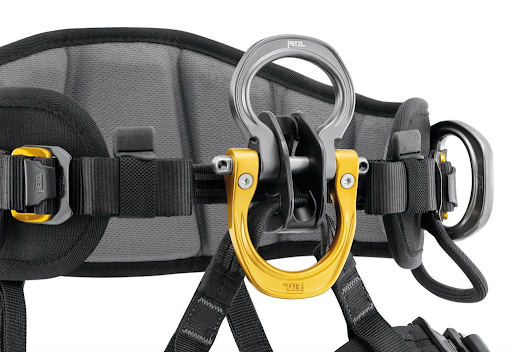Climbing projects, whether for work or recreation, demand the right safety equipment. Among the most critical pieces of gear is the rope access harness. Selecting the correct harness can make a significant difference in comfort, safety, and efficiency during your climb. Understanding what to look for and how to choose the right rope access harness is essential for anyone planning their next climbing adventure.
Understanding the Importance of a Rope Access Harness
A rope access harness is designed to keep climbers secure while they work at height. Unlike standard climbing harnesses, rope access harnesses are often used in professional settings such as construction, maintenance, or rescue operations. These harnesses distribute weight evenly across your body, reducing strain during extended periods of hanging or movement. Choosing the right harness ensures you remain safe and comfortable, preventing accidents and enhancing performance.
Types of Rope Access Harnesses
There are several types of rope access harnesses, each tailored for specific tasks. Full-body harnesses are ideal for situations where falls are more likely because they provide additional support across the shoulders, chest, and legs. Sit harnesses are more lightweight and suitable for climbing or rope work where the risk of a fall is lower, offering flexibility and freedom of movement. Understanding the type of climbing or work you will be doing helps determine which harness style will best meet your needs.
Key Features to Consider
When choosing a rope access harness, several features play a critical role in safety and usability. Look for harnesses with adjustable leg loops and waist belts to ensure a snug fit for different body types. Comfortable padding in key areas such as the waist and thighs can reduce fatigue during long climbs. Durable materials and reinforced stitching increase the lifespan of the harness and improve safety in demanding conditions. Some harnesses also offer additional attachment points for tools or accessories, which can be beneficial for professionals who need to carry equipment while working at height.
Fit and Comfort
A properly fitted rope access harness is crucial for both safety and comfort. An ill-fitting harness can cause chafing, pressure points, and discomfort, making it difficult to concentrate on your climbing or work tasks. Always try the harness on and adjust all straps according to the manufacturer’s guidelines. Ensure the harness sits correctly around your waist and thighs without restricting movement or circulation. Spending time finding a harness that fits well will make your climbing experience more enjoyable and reduce the risk of injury.
Safety Standards and Certifications
Safety should always be your top priority when selecting a rope access harness. Check that the harness meets recognized safety standards, such as those set by the International Mountaineering and Climbing Federation (UIAA) or the European Committee for Standardization (EN). Certifications indicate that the harness has undergone rigorous testing for strength, durability, and fall protection. Using a certified harness gives peace of mind that your equipment is reliable and meets industry safety requirements.
Maintenance and Longevity
A rope access harness is an investment in your safety, so proper care and maintenance are essential. Regularly inspect your harness for signs of wear, fraying, or damage to the stitching and buckles. Clean the harness according to the manufacturer’s instructions, usually with mild soap and water, and store it in a cool, dry place away from direct sunlight. Proper maintenance not only extends the life of your harness but also ensures it remains safe and effective for every climbing project.
Choosing the Right Harness for Your Needs
Selecting the right rope access harness ultimately comes down to matching your harness to the type of work or climbing you will be doing. Consider the duration of your climbs, the weight of any equipment you will carry, and the level of safety you require. Trying on different harnesses, reading reviews, and consulting with experienced climbers or professionals can help you make an informed decision. Investing time in choosing the right harness will enhance both safety and comfort during your project.
Conclusion
A rope access harness is a fundamental part of climbing safety and efficiency. By understanding the different types, key features, proper fit, safety certifications, and maintenance requirements, you can select a harness that meets your specific needs. Taking the time to choose the right rope access harness ensures that your next climbing project is not only successful but also safe and enjoyable. Proper gear is the foundation of any climbing adventure, and a reliable harness is the first step toward a secure and comfortable experience at height.


